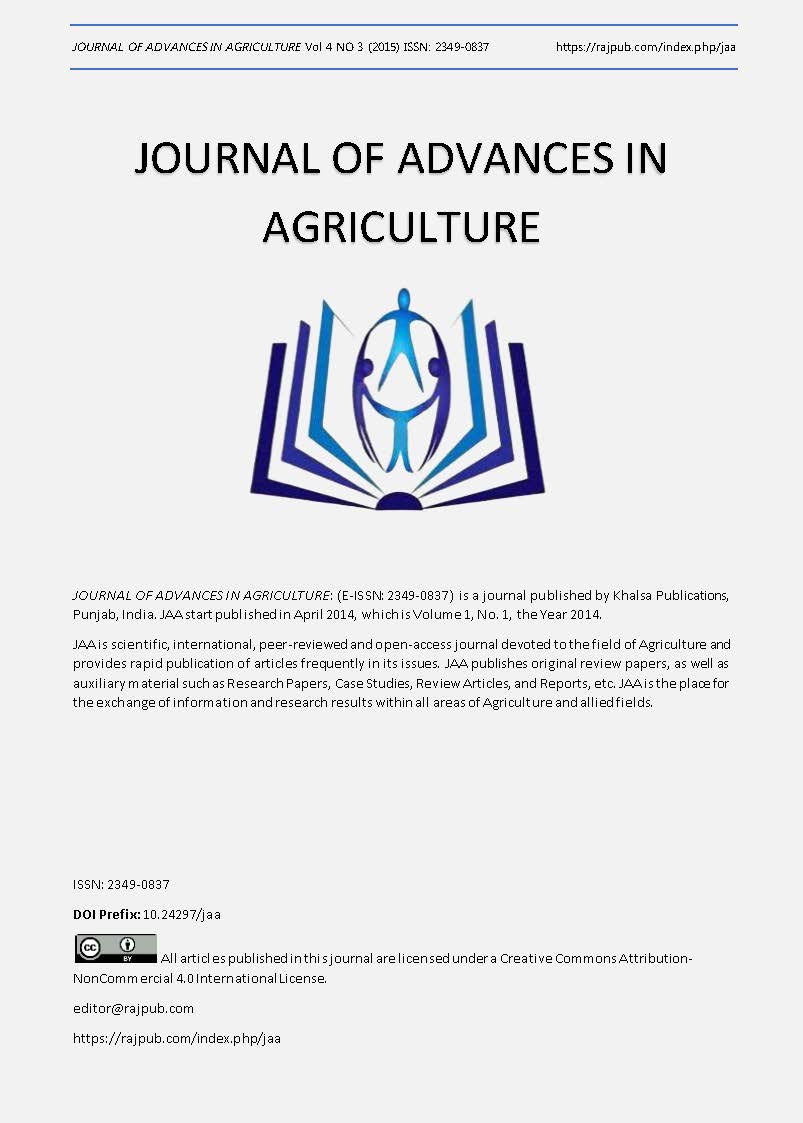GENETIC DIVERSITY OF CASSAVA (Manihot esculenta Crantz), (EUPHORBIACEAE) GROWN IN THREE AGROCLIMATIC ZONES OF CENTRAL AFRICAN REPUBLIC
DOI:
https://doi.org/10.24297/jaa.v4i3.4275Keywords:
Manihot esculenta, genetic diversity, CAR.Abstract
Cassava (Manihot esculenta Krants) introduced in the Central African Republic (CAR) in the 1850s, is now the staple food of the population. It does not know the genetic diversity of cultivated accessions in peasant communities. To assess this diversity, microsatellite technique was used on the 179 accessions identified. 137 alleles were amplified with an average of 5.95 alleles at the 23 loci. Analysis of genetic diversity within varieties across five villages showed that 46 accessions of 49 have a genotypic homogeneity is 93.87%. Only accessions "Tokonenanga" (Ndanga) "Touguenlag" (Soungbe) and "Sereka" (Karama) are each represented by two different genotypes.Downloads
Download data is not yet available.
Downloads
Published
2015-07-22
How to Cite
Zinga, I., E, K. K., F, D. M., S, A., A, A., P, Y., K, B., S, S., & K, A. (2015). GENETIC DIVERSITY OF CASSAVA (Manihot esculenta Crantz), (EUPHORBIACEAE) GROWN IN THREE AGROCLIMATIC ZONES OF CENTRAL AFRICAN REPUBLIC. JOURNAL OF ADVANCES IN AGRICULTURE, 4(3), 438–449. https://doi.org/10.24297/jaa.v4i3.4275
Issue
Section
Articles
License
 All articles published in Journal of Advances in Linguistics are licensed under a Creative Commons Attribution 4.0 International License.
All articles published in Journal of Advances in Linguistics are licensed under a Creative Commons Attribution 4.0 International License.




